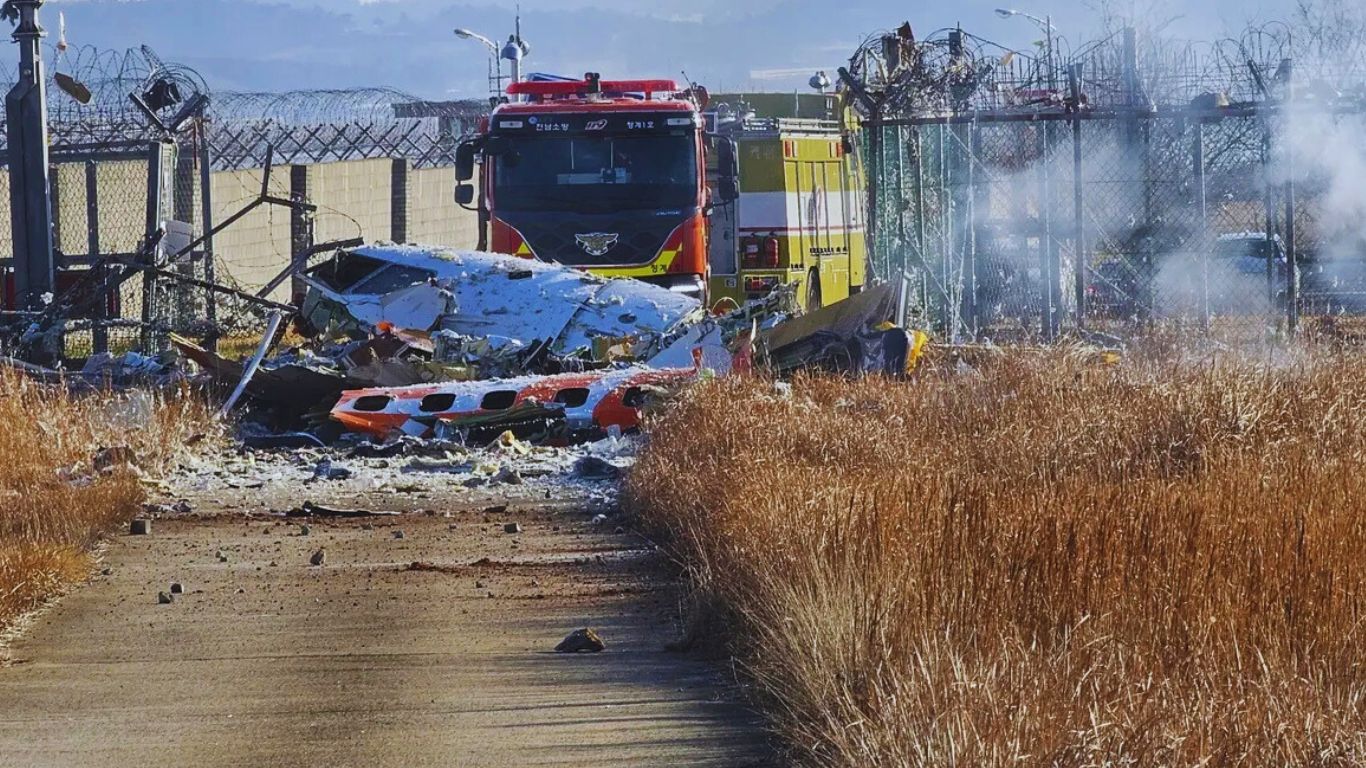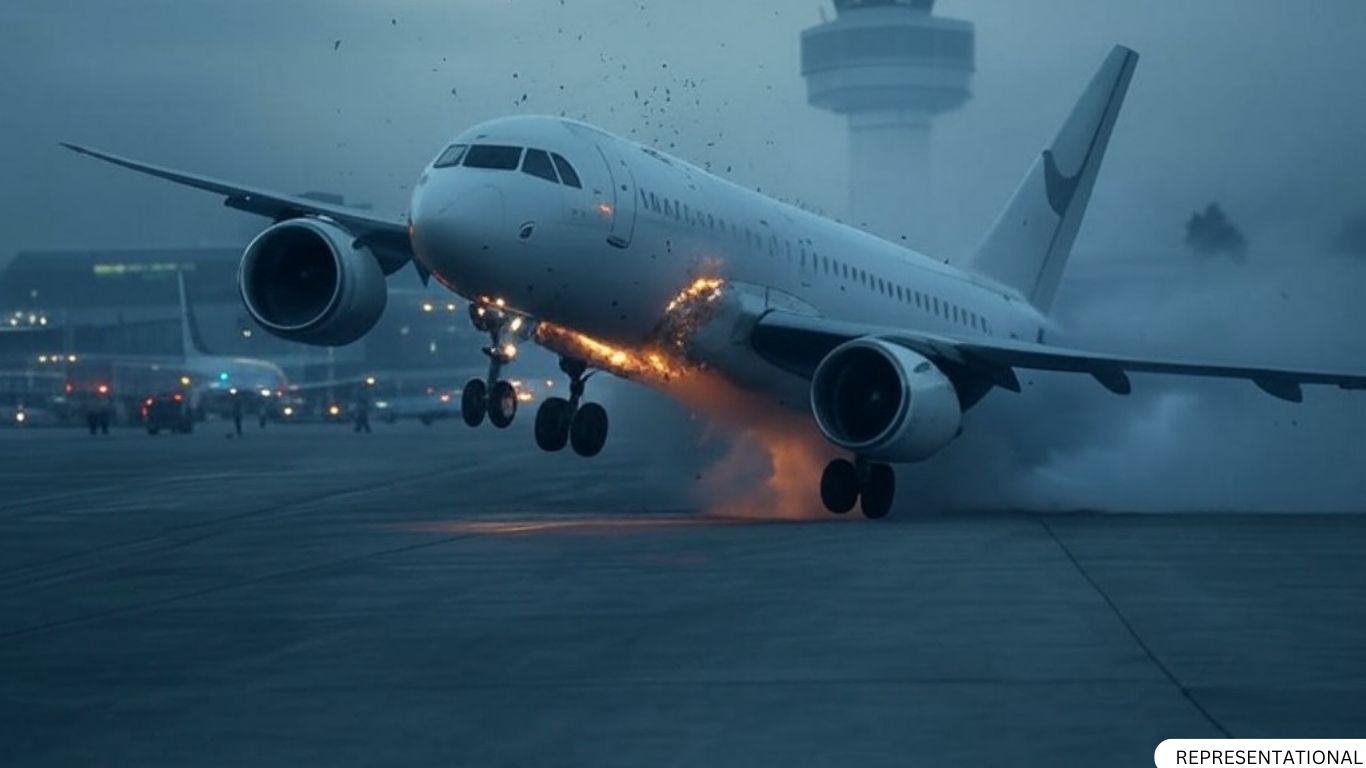A devastating crash involving a Jeju Air Co. Boeing 737-800 has resulted in a tragic loss of life, with over 170 passengers dead or missing. The accident, which occurred on Sunday morning at Muan International Airport in South Korea, has become the country’s worst aviation disaster in more than 20 years.
The Tragic Incident
Flight 2216 was en route from Bangkok to Muan International Airport, carrying 175 passengers and six crew members. The crash occurred at approximately 9 a.m. local time, leaving only two survivors.
Key Details of the Crash
- Fatalities: At least 124 passengers have been confirmed dead, with 49 still unaccounted for.
- Cause: Preliminary investigations suggest a landing gear malfunction, which forced the plane to land on its belly. It subsequently collided with a wall at the end of the runway.
- Fire and Damage: A large portion of the aircraft was destroyed in the ensuing fire, with only part of the tail remaining intact.
Emergency Response
South Korea’s Ministry of Land, Infrastructure, and Transport mobilized over 1,500 personnel, including police, military, and coast guard, to assist at the crash site.
- Rescue Efforts: Despite a swift response, the chances of survival for missing passengers remain low.
- Investigation: Six air accident investigators are on-site to gather evidence, including the flight-data recorder, which has been recovered. Efforts are ongoing to locate the cockpit voice recorder.
What Caused the Crash?
While the exact cause is yet to be determined, early reports suggest a combination of factors:
- Landing Gear Failure: The Boeing 737-800 reportedly landed without its wheels deployed.
- Bird Strike Warning: Muan’s control tower had warned of potential bird activity minutes before the crash.
- Collision Impact: The aircraft struck a wall at the end of the runway, leading to significant structural damage and passenger ejections.
Aircraft and Airline Background
The ill-fated plane, a 15-year-old Boeing 737-800, was initially delivered to Ryanair in 2009 before joining Jeju Air’s fleet in 2017.
- Aircraft Maintenance: Jeju Air’s CEO, Kim E-Bae, stated that the plane underwent regular maintenance and showed no signs of malfunction prior to the crash.
- Jeju Air: Founded in 2005, Jeju Air operates 42 aircraft and is one of South Korea’s leading low-cost carriers.
Impact on South Korea’s Aviation History
The crash is the deadliest aviation disaster in South Korea since 2002, when an Air China flight near Busan killed 129 people.
Recent Aviation Incidents Worldwide
- Dec. 25, 2024: An Azerbaijan Airlines plane crashed in Russian airspace, killing dozens.
- August 2024: A VoePass ATR crash near Sao Paulo, Brazil, claimed 62 lives.
- January 2024: A Japan Airlines Airbus A350 collided with a smaller plane on a Tokyo runway, resulting in five fatalities.
Global Aviation Safety Concerns
After a year of zero fatalities involving large commercial aircraft in 2023, 2024 has seen a troubling rise in aviation accidents.
- Boeing’s Challenges: The U.S. planemaker has faced scrutiny over manufacturing and quality control issues, such as the Boeing 737 Max 9 door plug failure earlier this year.
- Need for Reforms: These incidents highlight the urgency of stricter safety protocols and advanced risk management systems for global airlines.
Next Steps and Investigations
The South Korean government, in collaboration with Jeju Air and Boeing, has pledged a thorough investigation into the crash.
Critical Questions to Address
- Was the landing gear malfunction caused by a mechanical failure or external factors like a bird strike?
- Could pilot error or inadequate communication from air traffic control have played a role?
- Were there any overlooked issues during the aircraft’s maintenance checks?
Support for Victims and Families
Jeju Air has committed to supporting victims and their families, stating:
“We will provide all necessary assistance and cooperate fully with the investigation to determine the cause of this tragedy.”
Conclusion
The Jeju Air Flight 2216 crash is a stark reminder of the vulnerabilities in aviation safety, even for well-maintained aircraft. As South Korea grapples with this unprecedented loss, the focus now shifts to uncovering the truth behind the crash and implementing measures to prevent such tragedies in the future.
The incident also raises global concerns about aviation safety standards and the increasing number of air disasters this year, reinforcing the need for robust regulatory oversight.















